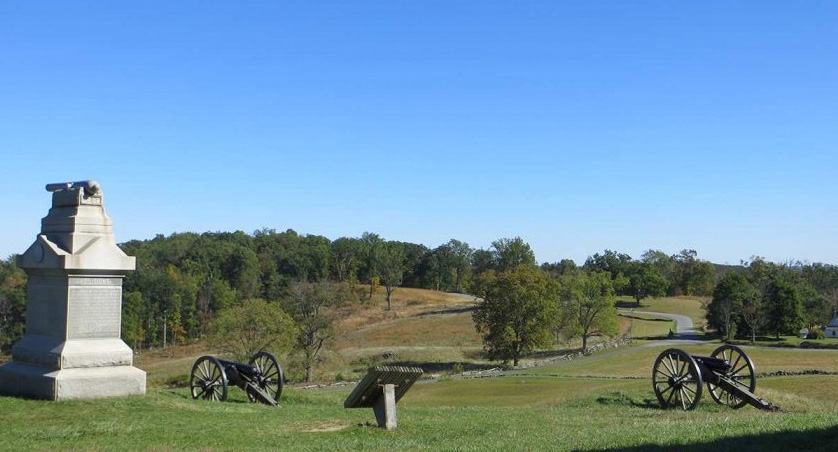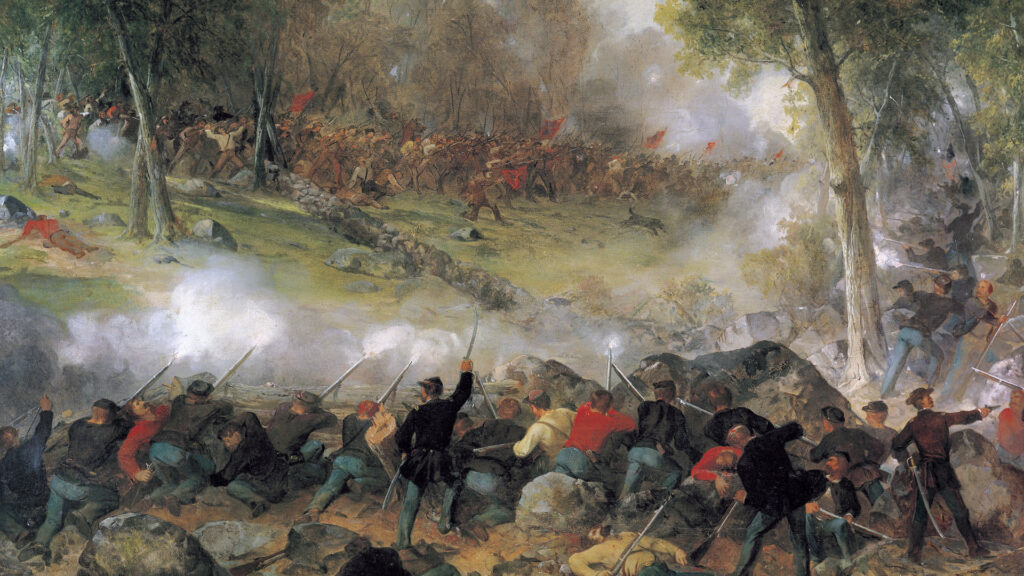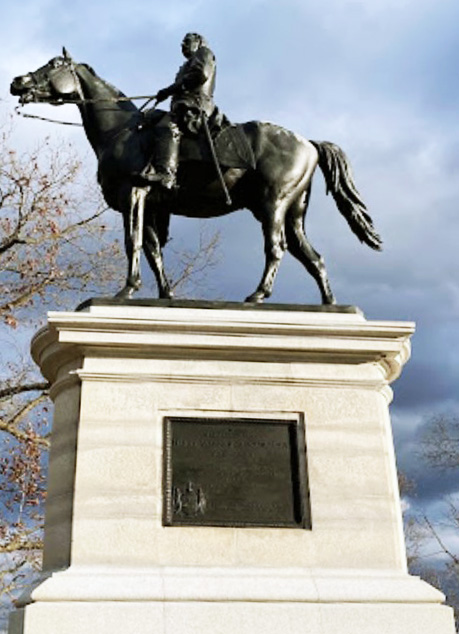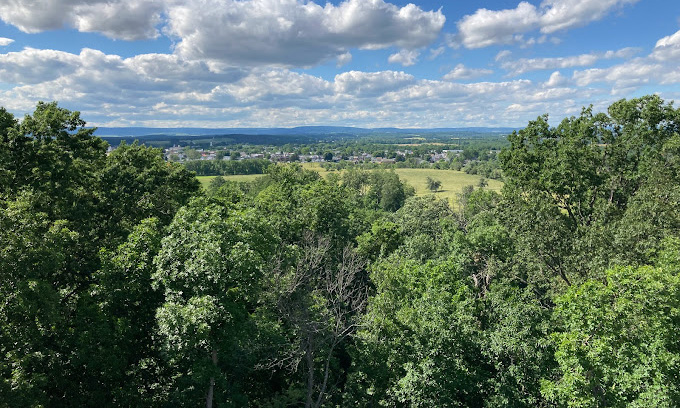
Battlefield Highlights: Culp’s Hill – The Long Fight
July 21, 2023One of the most important geographical features that played a prominent role in the Battle of Gettysburg is Culp’s Hill, located on the eastern side of the battlefield. The hill offered a high-ground advantage, providing Union troops an excellent vantage point to observe and defend against Confederate movements, while its elevation and rocky terrain made it an ideal defensive position.
Culp’s Hill acted as a key element for the Union position, anchoring the right flank of the Union army’s defensive line. If the Confederates had been able to capture and secure the hill, it would have threatened the stability and integrity of the entire Union position, potentially allowing a Confederate breakthrough. The resilience and determination of its Union defenders, thwarting Confederate advances, would ultimately shape the outcome of the entire battle.
Taking the Hill
Culp’s Hill was originally occupied around nightfall on July 1st, 1863, by Union troops. In conjunction with nearby Cemetery Hill, Culp’s Hill was used as a rallying point for Union troops retreating from the Confederate victory earlier that day northwest of town.
Confederate Lieutenant General Ewell, believing Culp’s Hill to be unoccupied, approached under discretionary orders to seize the heights south of town. He ordered Major General Johnson’s recently arrived force to advance and take the hill, but when Johnson sent a small party to reconnoiter, they encountered Union troops from Brigadier General Wadsworth’s division, as well as the Iron Brigade, fresh from their fierce battle on Seminary Ridge. Those Union troops were already digging in and fortifying their position on the hill. Johnson and his scouts were caught by surprise and almost taken prisoner before fleeing.
The Fight Begins
By mid-morning of July 2nd, 1863, the XII Corps had arrived and were continuing to fortify the hill, constructing breastworks, felling trees, and packing rocks and earth to create defensive positions.
The battle for Culp’s Hill officially began on the afternoon of July 2nd, 1863. Confederate General Robert E. Lee ordered a simultaneous attack against both ends of the Union line, which included Culp’s Hill on the extreme right flank.
At 4:00 PM, Lieutenant General Ewell began the coordinated attack, commencing a three-hour artillery barrage to soften up the hill’s defenders. As the hours passed, intense fighting on the opposite flank grew fierce, requiring Union reinforcements to be pulled off Culp’s Hill to help elsewhere, leaving only a skeleton force of 1400 men to defend the entirety of Culp’s Hill and the surrounding terrain.
Around 7:00 PM, as dusk fell and night approached, Ewell ordered Johnson’s force to attack Culp’s Hill in earnest. Johnson’s division attacked, but encountered stiff resistance from Major General Howard’s XI Corps. Despite initial success in dislodging some Union troops from their advanced positions, Johnson’s division was challenged by the difficult terrain and the ever-increasing darkness.
Recognizing the imminent Confederate assault on the right flank, Major General Slocum of the Union’s XII Corps quickly dispatched reinforcements to bolster the defense of Culp’s Hill. One notable figure among these reinforcements was Brigadier General George S. Greene, an engineer officer whose skill at crafting defensive breastworks played a crucial role in the defense of the hill.

The Long Night
Throughout the night, the fighting at Culp’s Hill raged on. The Confederates continued their attempts to dislodge the Union forces from their strong defensive positions, but their assaults were repeatedly repulsed by the resilient Union defenders.
The high quality of the superior defensive earthworks, coupled with the increasing darkness as night fell, kept the Confederates from accurately gauging how many Union defenders they truly faced. Without their defensive bulwarks, the smaller Union force might have been easily overrun. The attacking Confederates were essentially invisible in the dark except for brief instances when they fired, but the defensive works held until Union reinforcements arrived during the height of the fighting. Confusion reigned. The battle reached a critical point during the early morning hours of July 3rd, when it became nearly impossible to tell friend from foe in the darkness and more than one unit suffered from accidental friendly fire.
Neither side wanted to continue this chaotic fight. While some Confederates maintained a fragile hold on the lower heights, the majority of their comrades were pulled off the hill to wait for daylight. Reinforcing Union troops took up supporting positions in adjoining fields, also to wait for daylight. Both sides prepared to attack at dawn.
Who Holds the Hill
At dawn, five Union artillery batteries opened fire on the Confederates, pinning them down for 30 minutes to soften them up for a Union attack, but the Confederates struck first, charging back up the hill at numerous points. Fighting continued until late morning, the bulk of which included three attacks by Johnson’s men, all of which failed.

Both sides had been reinforced overnight, but the Confederates still couldn’t muster enough manpower to overrun the strong Union positions. Around 10:00 AM, the final Confederate attack was beaten back with heavy losses.
The end of the fighting came near noon, with a futile counterattack by two Union regiments against Confederates who had taken refuge behind captured defensive earthworks on the lower slopes. Two regiments attacked in sequence but were both repelled with terrific losses. But the determined resistance of the Union troops ultimately prevented the Confederates from gaining a significant foothold on Culp’s Hill.
The Confederates, exhausted from the night’s fighting and facing diminishing chances of success, gradually withdrew from their advanced positions. Recognizing the futility of further attacks, General Ewell made the decision to halt the assault on Culp’s Hill.
After the seven-hour fight, Culp’s Hill remained in Union hands, but at a terrible cost. The hillside and the surrounding woods and meadows were littered with the bodies of the dead and wounded. Confederate losses at Culp’s Hill numbered approximately 2,800. The Union lost about 1,000 men over both days.
The fight for Culp’s Hill also earned the distinction of being the longest sustained fighting of the Battle of Gettysburg. From first light (about 4:00 AM) on July 3rd, 1863, until about 11:00 AM later that day, Union and Confederate troops were engaged in a sustained, seven-hour firefight with no breaks in the action. No other fighting on the Gettysburg battlefield matched the July 3rd fight on Culp’s Hill for consistency and duration.
The Outcome
The successful defense by the Union forces ensured that the right flank of the Union line remained intact, preventing a potential Confederate breakthrough. The tenacity and resilience displayed by the Union troops exemplified a determination that would ultimately prove victorious at the war’s end.
The long fight at Culp’s Hill during the Battle of Gettysburg serves as a testament to the bravery, resilience, and strategic prowess of those who fought there, whose suffering and sacrifice left an indelible mark on the history of the American Civil War.
Visiting the Site
Visiting the site of Culp’s Hill on the Battlefield of Gettysburg continues to offer a remarkable opportunity for readers to personally engage with the historically significant events that unfolded there. By stepping foot on this hallowed ground, one can forge a direct connection to the brave combatants who valiantly fought and tragically perished on that very soil.

The Culp’s Hill Tower is one of two 19th century observation towers remaining on the battlefield. When Gettysburg became a National Park in 1895, five such towers were constructed at various points on the battlefield. Only two and a half of those original towers still exist, regularly refurbished by the National Park Service. The Culp’s Hill Tower is one of those, affording modern visitors with a breathtaking view of the entire Union line to the Round Tops, including the National Cemetery and the town below.
The multitude of monuments that dot the otherwise pastoral landscape of this ground testifies to the brutal cost of those long hours of conflict. A visit here provides a truly unique and intimate perspective, allowing individuals to personally grasp the significance of the profound cost and sacrifices endured during the tumultuous era of the Civil War.
Location of Culp’s Hill
Culp’s Hill is located 3/4th of a mile to the south of Downtown Gettysburg.
Plan your next excursion with us! Our bus tours of the historic Gettysburg Battlefield are active and ready to show you the sites of the historical battleground. Reservations can be made by calling our toll-free number at 877-680-8687. You can also purchase bus tour tickets online. Tours depart from the Gettysburg Tour Center located at 777 Baltimore St., Suite 100.